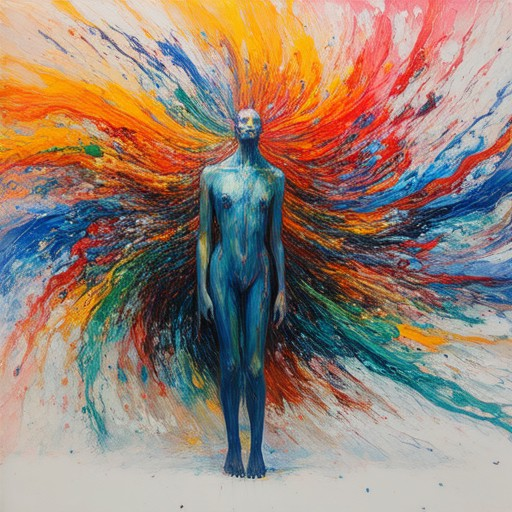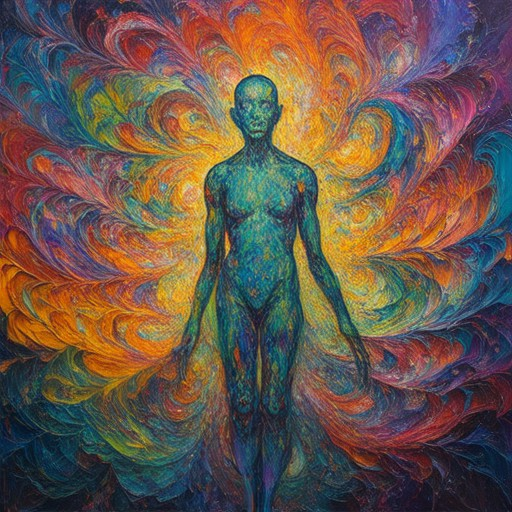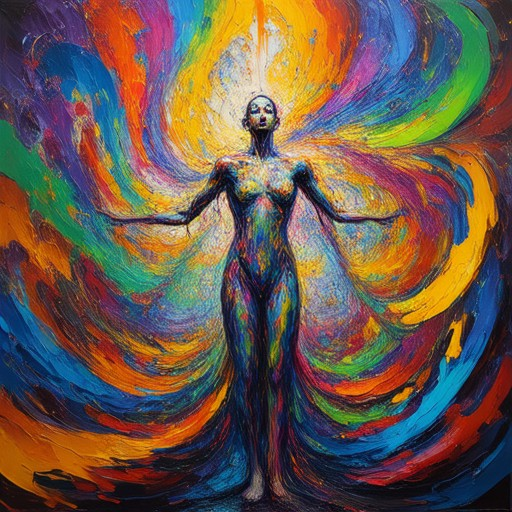Unleashing Creative Practices in Art: Examples and Practical Applications
Art has always been a powerful medium for expressing individuality, fostering innovation, and shaping cultures. At its core, art is about exploration and experimentation, and one of the most effective ways to unlock artistic potential is through creative practices. Whether you’re an aspiring artist or someone looking to reignite your passion, understanding and implementing creative practices can transform your approach to art. From traditional techniques to modern innovations, creative practices offer endless possibilities for self-expression, problem-solving, and personal growth. In this article, we’ll explore what creative practices in art entail, provide practical examples, and share insights on how to foster creativity in your daily life. By doing so, we aim to inspire you to embrace new challenges and discover the joy of artistic expression.

What is a Creative Practice in Art?
A creative practice in art refers to the ongoing process of exploring, experimenting, and developing artistic ideas, techniques, and projects. It encompasses all aspects of your creative journey, from initial brainstorming and sketching to refining finished works. This practice allows artists to express their unique perspectives, grow their skills, and evolve their style over time.
Key Components of Creative Practice
- Brainstorming : Generating ideas and concepts that inspire your artwork. This step often involves researching themes, studying other artists, or exploring different mediums.
- Sketching : Creating preliminary designs or rough drafts to visualize ideas before committing to a final piece. Sketches can explore different styles, compositions, or approaches.
- Experimentation : Trying new materials, tools, or techniques to see how they can enhance your work. This might involve mixing media, layering textures, or incorporating unexpected elements.
- Developing Themes : Picking a central idea or concept that unifies your artwork. This could be a narrative, a emotion, or a visual motif that you want to express.
- Refining Work : Editing and perfecting your pieces based on feedback, self-criticism, or improvements in technique. This step ensures your work reaches its full potential.
- Documentation : Keeping records of your creative process, including notes, photos, videos, or journals. Documentation helps track progress, reflect on growth, and provide insight into your artistic evolution.
Benefits of a Creative Practice
- Personal Growth : Artistic practice fosters creativity, problem-solving skills, and self-expression.
- Experimentation : Allows artists to take risks and explore new directions without pressure.
- Portfolio Development : A strong creative practice provides a wealth of work to showcase your abilities and style.
For further exploration of creative practices, visit Artful Journey to discover articles, resources, and insights tailored for artists at all levels.
What Are Some Creative Practices?
We believe creativity is a skill that can be cultivated through intentional practices and curiosity. Here are some effective ways to embrace and nurture your creative potential:
Creative Practices to Explore
- Daily Journaling: Dedicate time to write down your thoughts, observations, and ideas. This helps in capturing random thoughts and sparks of inspiration.
- Experiment with New Techniques: Regularly try different art forms or creative mediums to push your boundaries and discover new strengths.
- Explore Nature: Spend time outdoors to observe patterns, colors, and textures in the world around you, which often inspire creative solutions.
- Engage in Collaborative Projects: Working with others can expose you to diverse perspectives, fostering innovative thinking and problem-solving skills.
- Practice Mindfulness: A calm and focused mindset allows for clearer thinking and more creative ideas. Techniques like meditation can help achieve this state.
- Stay Curious: Approach life with curiosity, asking questions and exploring unfamiliar subjects to broaden your creative horizons.
- Learn from Others: Study the works of artists, writers, and innovators to gain inspiration and develop your unique style.
- Set aside Time for Creativity: Establish a dedicated space or schedule for creative activities, ensuring consistency in your practice.
- Embrace Diversity: Engage with different cultures, perspectives, and stories to enrich your creative palette and spark new ideas.
- Feedback and Iteration: Share your work with peers or mentors for constructive feedback, allowing you to grow and refine your approach.
- Think Visually: Practice seeing the world through different lenses, whether it’s through photography, sketching, or simply observing everyday objects with fresh eyes.
- Use Constraints: Sometimes limits can lead to more creative solutions. Try working within specific constraints to challenge yourself.
- Keep a Creative Space: Organize your workspace to reflect your personality and inspire productivity. A clutter-free environment can boost creativity.
- Seek Inspiration: Use online platforms, art exhibitions, and books to find motivation and ideas that resonate with your interests.
- Practice Gratitude: Reflecting on what you’re thankful for can shift your mindset, often leading to new creative insights and perspectives.
- Take Risks: Step out of your comfort zone to explore uncharted creative territories, even if the outcome isn’t immediately clear.
- Document Progress: Keep records of your creative journey, whether through photos, videos, or written notes, to track your growth and evolution.
- Foster a Growth Mindset: Believe that your abilities can be developed through dedication and practice, which is essential for sustained creativity.
Steps to Cultivate Creativity
- Start Small: Begin with simple projects to build confidence and momentum without overwhelming yourself.
- Be Consistent: Regular practice is key to developing any skill, including creativity. Even short sessions can make a difference.
- Seek Feedback: Constructive criticism helps identify blind spots and improves the quality of your work.
- Stay Curious: Keep learning and exploring to stay inspired and motivated in your creative endeavors.
- Embrace Experimentation: Don’t fear failure; view it as a necessary part of the creative process.
- Find Your Niche: Focus on areas where you feel passionate and have expertise to create meaningful work.
- Surround Yourself with Creatives: Being around like-minded individuals can fuel your creativity and provide support.
- Stay Open-Minded: Be willing to adapt and evolve your style based on new experiences and insights.
- Practice Self-Care: A healthy body and mind are essential for creativity. Prioritize sleep, nutrition, and mental well-being.
- Express Gratitude Daily: Recognizing the little things can boost your mood and inspire creative thinking.
- Stay Connected: Engage with communities and networks that share your passion for creativity and innovation.
- Document and Reflect: Regularly review your work to see progress and identify areas for improvement.
- Stay Flexible: Adaptability is crucial in a changing world. Embrace change as an opportunity to innovate.
- Celebrate Success: Acknowledge achievements to stay motivated and reinforce your commitment to creativity.

What is Creative Practical Arts?
Creative and Practical Arts encompass a broad range of disciplines designed to foster creativity, innovation, and practical skills. These art forms include dance, drama, visual arts, and music, offering students opportunities to explore their imaginations while developing technical proficiency. The goal is to enable individuals to create meaningful expressions and critically evaluate their own work and that of others.
The field of Creative Practical Arts is deeply rooted in providing a dynamic environment for learning and self-expression. Students engage in hands-on activities, allowing them to experiment with various mediums and techniques. This approach not only nurtures artistic talent but also enhances problem-solving abilities, communication skills, and emotional intelligence.
Key Components of Creative Practical Arts
- Dance: Focuses on movement, rhythm, and storytelling. Dancers learn to interpret music, tell narratives, and perform choreographed routines.
- Drama: Involves acting, improvisation, and scriptwriting. Students explore character development, stage direction, and thematic exploration.
- Visual Arts: Encompasses painting, sculpture, photography, and digital media. Artists create original works and analyze existing pieces to understand artistic styles and techniques.
- Music: Includes playing instruments, singing, composing, and arranging music. Musicians develop their auditory expression and appreciation for diverse musical genres.
Benefits of Engaging in Creative Practical Arts
- Creativity and Innovation: Encourages thinking outside the box and finding unique solutions to problems.
- Self-Expression: Provides a safe space for individuals to articulate their emotions, thoughts, and personal experiences.
- Cognitive Development: Enhances memory, attention span, and critical thinking skills through active engagement.
- Social Skills: Builds teamwork, collaboration, and empathy through group performances and projects.
Educational Resources and Platforms
Artful Journey offers a wealth of resources for artists and art enthusiasts, including tutorials, articles, and inspiration. The platform features content on various art forms, techniques, and creative processes, catering to both emerging and established artists. Explore their site to discover tips, guides, and community discussions that can elevate your artistic journey.
For further learning, consider exploring competitors like Khan Academy or Coursera , which offer courses on art history, creative writing, and digital media. These platforms provide structured learning opportunities to complement your practical arts education.
By engaging in Creative Practical Arts, individuals unlock their creative potential and gain valuable life skills that extend beyond the classroom. Whether through dance, drama, visual arts, or music, these disciplines contribute to a well-rounded education and a rich cultural heritage.

How Can I Practice Creativity in Art?
Practicing creativity in art involves a combination of mindset, technique, and consistent exploration. Here are some effective strategies to enhance your artistic creativity:
- Dedicate Time to Creative Practice – Set aside regular hours each week dedicated to artistic expression. Whether it’s painting, sculpting, or digital art, routine fosters creativity.
- Experiment with New Materials – Explore different mediums like watercolors, oils, or mixed media to discover unique textures and effects.
- Study Different Art Forms – delving into photography, sketching, or even calligraphy can inspire fresh perspectives and techniques.
- Seek Inspiration Regularly – Visit museums, galleries, or nature spots to absorb diverse styles and motifs that can spark your imagination.
- Collaborate with Others – working with fellow artists or mentors can expose you to new ideas and approaches, broadening your creative horizons.
- Journal Your Ideas – keeping a sketchbook allows you to document thoughts and experiments, serving as a visual archive of your creative evolution.
- Learn from Successful Artists – studying masterpieces and tutorials can teach you advanced techniques and innovative problem-solving strategies.
- Embrace Failure as Learning – every unsuccessful attempt brings you closer to discovering what works, so view setbacks as part of the creative journey.
- Stay Curious and Open-Minded – approach art-making with curiosity, willing to experiment and adapt, which keeps your creative process dynamic and engaging.
- Reflect and Improve – regularly assess your work to identify strengths and areas for growth, refining your approach over time.
By consistently applying these strategies, you can unlock your creative potential and continually evolve as an artist. Remember, creativity is a muscle that grows with exercise, so keep experimenting and enjoying the process!
How Do You Practice Creativity?
1. Embrace Curiosity and Explore New Ideas
Curiosity is the spark of creativity. Ask questions, explore unfamiliar topics, and engage with diverse perspectives. This broadens your thinking and inspires innovative ideas.
2. Practice Brainstorming Techniques
Brainstorming allows your mind to wander freely. Write down every idea, no matter how silly, as this fosters creativity. Group brainstorming sessions can amplify your creativity further.
3. Set Creative Goals
Define clear, achievable creative goals. Whether it’s learning a new skill or completing a project, having objectives keeps you focused and motivated.
4. Experiment and Iterate
Don’t fear failure. Experimentation is key to discovering new creative approaches. Iterate on your work, refining it based on feedback and self-criticism.
5. Surround Yourself with Inspiration
Be inspired by art, nature, literature, and other creative fields. Visiting museums, hiking in scenic areas, or reading books can reignite your creative fire.
6. Develop a Daily Routine
Consistency is crucial. Dedicate time daily to your creative pursuits, whether it’s journaling, sketching, or working on a personal project. This builds momentum and habit formation.
7. Seek Feedback and Collaborate
Share your ideas with others for constructive criticism. Collaboration can lead to fresh perspectives and enhance your creativity. Join creative communities or workshops to engage with like-minded individuals.
By integrating these practices into your routine, you can unlock your full creative potential and foster a lifelong love for innovation.

What is Creativity in Art?
Creativity in art refers to the ability to innovate, imagine, and express ideas in a unique way. It involves thinking outside conventional patterns and bringing originality to artistic expression across various mediums. Here are some examples of creativity in art:
Traditional Forms of Creativity
- Leonardo da Vinci – Known for his groundbreaking work in anatomy, engineering, and art, such as the Mona Lisa and The Last Supper.
- Michelangelo – Renowned for his frescoes like the Sistine Chapel and David, showcasing exceptional skill and innovation.
- Shakespeare – His plays and poetry redefined storytelling and language, inspiring countless artists and writers.
- Mozart – His compositions transcend traditional boundaries, leaving an indelible mark on classical music.
Modern and Contemporary Examples
- Andy Warhol – Pioneered Pop Art, using repetition and mass production to create iconic works like Campbell’s Soup Cans.
- Salvador Dalí – Known for his surrealist paintings and unique techniques, blending reality with the irrational.
- Mark Rothko – Influential color field painter whose works explore emotions and the abstract.
- Jeff Koons – Famous for his large-scale installations and sculptures that blend pop culture with fine art.
Digital and Experimental Forms
- Street Art – Artists like Banksy have revolutionized public spaces with thought-provoking and innovative murals.
- Virtual Reality (VR) Art – Creators are exploring immersive experiences that challenge traditional art forms.
- Body Art – Performances and installations that challenge physical and emotional boundaries.
- Environmental Art – Artists like Andy Goldsworthy create temporary or permanent pieces that interact with nature and the environment.
Creative Process and Technique
- Tell-Tale Hearts – A sculpture by Banksy that highlights themes of love and loss, using everyday objects in a unique way.
- The Persistence of Memory – A painting by Salvador Dalí that challenges traditional perspectives on time and memory.
- Stained Glass Windows – Designs that combine vibrant colors with intricate patterns, often depicting religious or cultural narratives.
- Collage Art – Artists like Marcel Duchamp blended found objects and paint to create visually striking and conceptual works.
Conclusion
Creativity in art is a dynamic and evolving force that transcends time and medium. From the works of historical masters to contemporary innovators, creativity continues to push boundaries and inspire audiences worldwide. Whether through traditional mediums or cutting-edge technologies, the essence of creativity remains a driving force behind artistic expression.




0 Comments